 Technology
Technology  Technology
Technology  Humans
Humans 10 Everyday Human Behaviors That Are Actually Survival Instincts
 Animals
Animals 10 Animals That Humiliated and Harmed Historical Leaders
 History
History 10 Most Influential Protests in Modern History
 Creepy
Creepy 10 More Representations of Death from Myth, Legend, and Folktale
 Technology
Technology 10 Scientific Breakthroughs of 2025 That’ll Change Everything
 Our World
Our World 10 Ways Icelandic Culture Makes Other Countries Look Boring
 Misconceptions
Misconceptions 10 Common Misconceptions About the Victorian Era
 Mysteries
Mysteries 10 Strange Unexplained Mysteries of 2025
 Miscellaneous
Miscellaneous 10 of History’s Most Bell-Ringing Finishing Moves
 Technology
Technology Top 10 Everyday Tech Buzzwords That Hide a Darker Past
 Humans
Humans 10 Everyday Human Behaviors That Are Actually Survival Instincts
 Animals
Animals 10 Animals That Humiliated and Harmed Historical Leaders
Who's Behind Listverse?

Jamie Frater
Head Editor
Jamie founded Listverse due to an insatiable desire to share fascinating, obscure, and bizarre facts. He has been a guest speaker on numerous national radio and television stations and is a five time published author.
More About Us History
History 10 Most Influential Protests in Modern History
 Creepy
Creepy 10 More Representations of Death from Myth, Legend, and Folktale
 Technology
Technology 10 Scientific Breakthroughs of 2025 That’ll Change Everything
 Our World
Our World 10 Ways Icelandic Culture Makes Other Countries Look Boring
 Misconceptions
Misconceptions 10 Common Misconceptions About the Victorian Era
 Mysteries
Mysteries 10 Strange Unexplained Mysteries of 2025
 Miscellaneous
Miscellaneous 10 of History’s Most Bell-Ringing Finishing Moves
10 Fascinating Pet Facts
Pets are an important part of the human experience for many of us. Sharing our lives with other species connects us with nature and provides companionship. Yet there are a host of myths that are pervasive in the pet scene, and some facts that even the most experienced pet owners may not be familiar with.
10 Frog Bites Can Be Serious
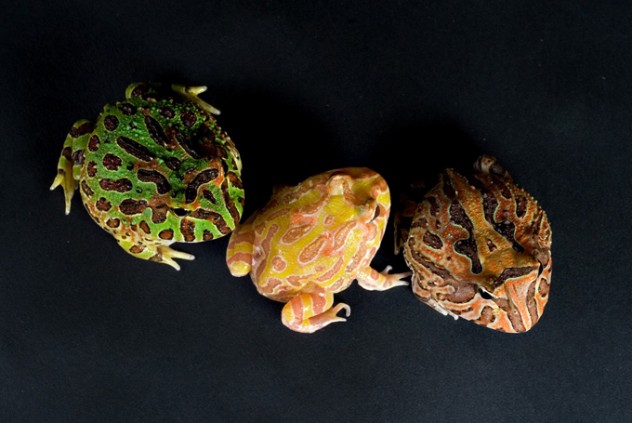
Frogs are generally thought of as the most harmless of animals, perhaps with the exception of the extremely poisonous dart frogs found in tropical rain forests. Frogs are also widely kept as interesting alternative pets. However, one of the most popular and comical-looking pet frog species has a dark secret. So-called Pacman frogs pack a truly ferocious bite.
Known properly as the Argentine horned frog, the creature grows to over 16 centimeters (6.3 in) in length and will consume nearly anything, including mammals and other frogs. The frogs are known for their fearless nature, and may inflict extremely painful and bloody wounds with their odontoid teeth, which are anchored to vise-like jaws. Bizarre legends arose in their South American homeland, including the superstition that horned frogs kill grazing horses by clamping onto their lips.
9 Horses Are Basically Extinct
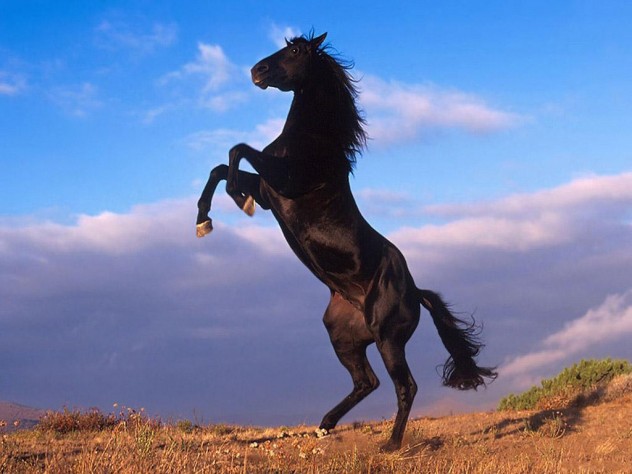
If you want to see an endangered animal of the rarest kind, an essentially extinct species, visit the nearest stable. The horse species (Equus ferus) is made up of several subspecies. The presumed ancestor of our domestic horse was the tarpan, or Eurasian wild horse, but tragically, it is extinct. The Prezewalksi’s horse, a small East Asian subspecies of wild horse, is the only subspecies of horse remaining in the wild. The origin of the species we are familiar with in captivity remains an enigma and has been the subject of efforts to recreate it.
The loss of horses from ecosystems worldwide over thousands of years has had notable environmental effects, including changes in vegetation patterns and the loss of a food source for predators. So-called wild horses such as mustangs are feral populations that escaped human management, but will still partially fill the original horse’s ecological niche.
8 Parrots Are Disease Carriers

Parrots are among the most popular pet birds available for purchase. Unlike many shy, insect-eating bird species, parrots are easy to handle, interact well with humans, and are extremely easy to feed. Australian “budgie birds” are the world’s most popular winged pet, and although sparrow-sized, they are actually a tiny parrot. Almost as popular is the cockatiel, which is often thought of as a parakeet. In fact, this bird is the smallest of the cockatoos, a group of extremely distinctive crested parrots from Australasia.
Parrots can be wonderful pets, but they are not without their dangers. They can produce a fine powder capable of causing extremely serious lung damage, a disease known as “bird fancier’s lung.” In addition, owners of parrots might find themselves in the same boat as those who fail to practice safer sex. Chlamydia is carried in an avian form, and close contact with parrots can induce a nasty case of “parrot fever.” If not treated properly, this disease can be fatal. Parrots are also at high risk of developing obsessive compulsive disorder, including self-mutilation and feather-plucking if improperly caged. Properly caring for a parrot can be a greater commitment than keeping a dog.
7 Cats And Dogs Can Blind You

It is well known that close contact with dogs, cats, or their waste can be a source of parasites, and that such parasites may cause illness, especially impaired digestion. However, the results of certain roundworm infections known as Toxicariosis can be much more serious. Infection by the nematode parasite responsible for Toxicariosis often occurs through waste-contaminated soil or physical contact with dogs and sometimes cats. The debilitating Toxicariosis organism may trigger blindness if not properly treated. In addition to fevers and breathing difficulty, advanced cases of infection have been known to cause detachment of the retinas, leading to potentially permanent and serious ocular damage. While only a few cases are reported every year in Britain, thousands of cases of infection occur in the United States. Proper hand-washing can greatly mitigate the threat.
6 Hummingbirds Can Be Kept As Pets
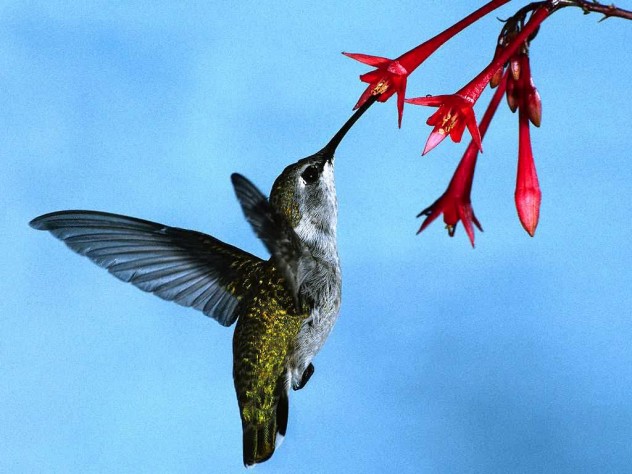
Parrots, canaries, finches, and even mynah birds are mainstays of pet stores and the breeding rooms of hobbyists. However, it may come as a surprise that certain avid bird keepers keep hummingbirds in specially equipped aviaries. These bird rooms are equipped with nectar instead of birdseed and protein pellets, and often contain a range of flowering plants to make the hummers feel more at home. Some exotic hummingbirds can beat their wings over 50 times per second. Metabolism in Northern hummingbirds is especially high, requiring up to three times their body weight in nectar daily. It is not legal to keep most hummingbirds, but breeding stocks may allow the dedicated bird keeper to obtain pairs for an aviary.
5 There Are Lots Of Goldfish Alternatives

Goldfish are the classic choice for those seeking a fish that will thrive in a simple coldwater tank, rather than the higher-maintenance heated aquariums required by more delicate tropical fish. Unfortunately, many pet stores, and therefore a majority of pet owners, are unaware of the amazing alternative cold water species available to cohabit with goldfish. The red shiner of North America has recently been championed as a sensational cool water aquarium fish, and it rivals the most vibrant tropical tetras with its blue body and red fins.
Dojo loaches, a type of bottom feeder resembling an eel, can serve as a bottom fish in goldfish tanks and will tolerate temperatures down to 12.8 °C (55 °F). Finally, American bluntnose minnows, which are shaped like a beluga whale, or Chinese white clouds provide shimmering shoals as backdrops to larger fish. These fish measure around 10 centimeters (3.9 in) and tolerate temperatures of 10 °C (50 °F).
4 Canaries Are The Real Finches

Walk into the bird department of any pet store, and you will be offered a choice between canaries and finches. In fact, Atlantic canaries (Serinus canaria), which were bred from wild ancestors along several mid-east Atlantic coastlines, are finches of the family Fringilidae. The multitude of colorful songbirds sold as finches are not really finches at all, but members of a highly successful tropical family known as waxbills, munias, or manikins.
These are the estrilid finches, and in contrast to northern true finches such as the canary, form a group more closely allied to the weaverbirds and sparrows. These species inhabit open brushlands and forests primarily in the southern hemisphere and are distinguishable by their slightly bulbous, glossy bills and tiny size. Waxbills are a little tamer than true finches.
3 Mollusks Make Great Pets

Keen aquarists realize all too quickly that there are plenty of fish in the sea, but that it can get quite boring. Thankfully, there is the option of keeping other marine life in a freshwater tank. Over 20 species of freshwater shrimp and prawns are available in colors ranging from scarlet to blue. Some species reach six centimeters (2.4 in) in length. Raised to prominence by Japanese world aquarium expert Dr. Takashi Amano, river shrimp scavenge like catfish and remove algae from plants.
To filter the water and further increase marine overtones, it is possible to purchase beautiful and bizarre freshwater mussels and clams in a variety of colors, with shells measuring over 10 centimeters (3.9 in). Finally, for a truly incredible “false marine” effect, Australia’s magnificent blue lobster (actually a species of river yabbie) may be added. But beware—its claws make short work of many fish and plants, so it should only be placed in rocky tanks with larger fish.
2 Ferrets Are Ferocious Predators
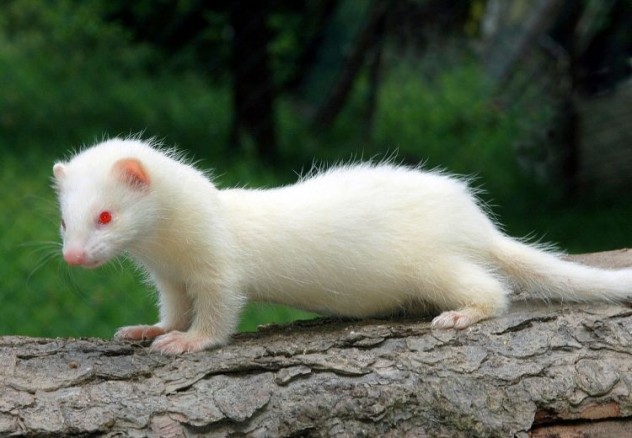
The ferret, the increasingly popular little exotic carnivore is actually the domesticated form of the Eurasian polecat, a fairly large, weasel-like mammal found across much of Eurasia. In the wild, polecats are greatly feared predators near chicken coops, but unlike many species in the weasel family, polecats can be successfully tamed if taken young. Some controversy exists over which precise species of polecat gave rise to ferrets. Polecats and ferrets share many aspects of coloration, including combinations of white and reddish-brown hair.
Ferrets have long been used in a manner similar to falconry birds or hunting dogs, released to hunt pest animals or small game. Wild polecats may engage in an exceptionally creepy hunting method where they puncture the brain of their prey, leaving it alive but paralyzed. The prey is then cached in the polecat’s burrow to be killed later.
1 Exotic Pets Need Not Be A Problem
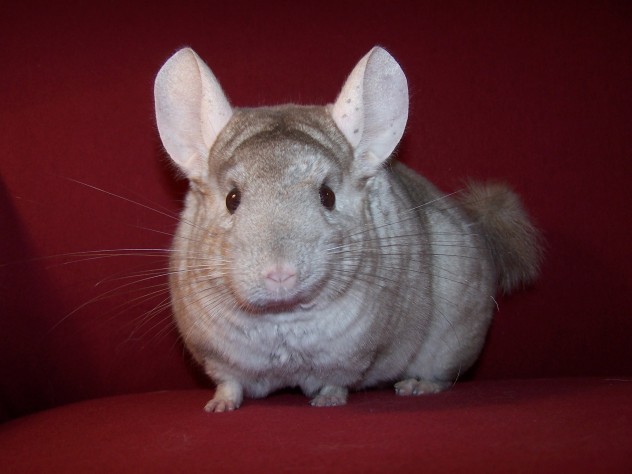
Exotic pets make headlines from time to time as a source of controversy, leading to proposed or enacted exotic pet bans, followed by a backlash by owners. However, the term “exotic pet” is not as black-and-white as detractors would suggest. First, many dangerous animals that cause deaths worldwide each year, such as dogs or bulls, actually belong to domestic species. While certain exotic species are certainly problematic or unsuitable as pets, many familiar, harmless animals could be considered exotic pets as wel. These include budgerigars, wall lizards, chinchillas, Mongolian gerbils, ornamental lobsters, and dwarf catfish.
All these species are far closer to their ancestors than domestic dogs or cats, but may be equally tame, and are certainly far less dangerous to humans. In fact, arguments can be made that small exotics may be better cared for than “standard” pets. It seems that targeting exotic pets, which has led to actions such as bans on miniature hedgehogs is often an inappropriate approach that fails to consider how wild “domestic” species can stay, and how tame and problem-free exotic species can become.
Ron Harlan investigates of the mysteries of nature and the bizarre findings that often crop up on this planet. He is a freelance writer, avid naturalist and graduate student of science. The author enjoys keeping several of the pets mentioned on this list.
Contact Ron for Custom Wildlife Tours in British Columbia, Canada.








